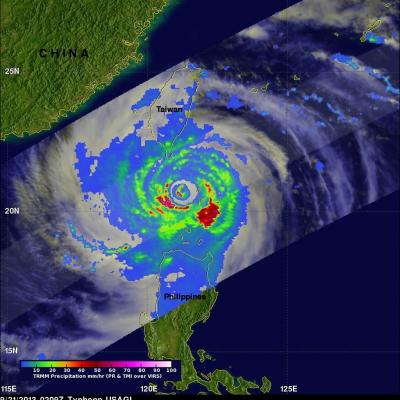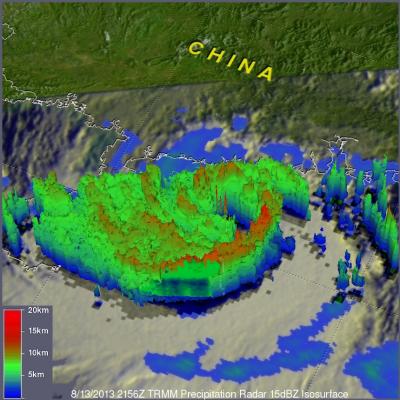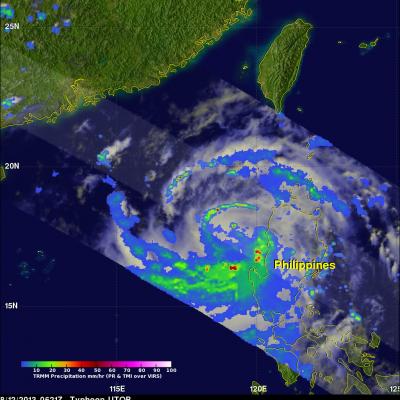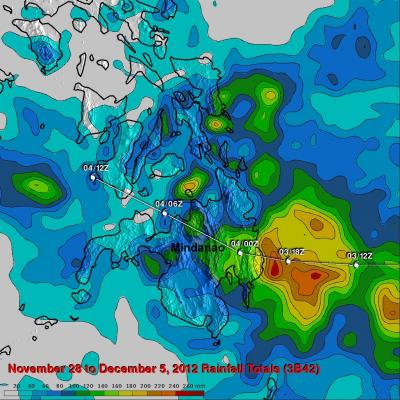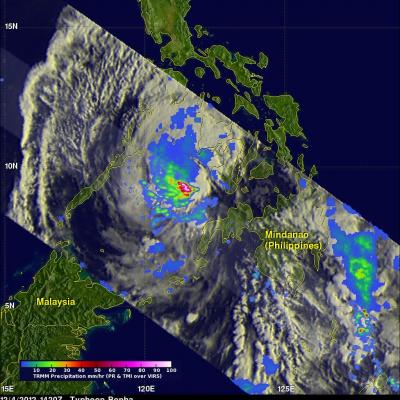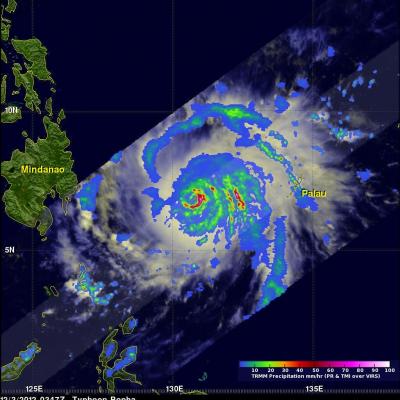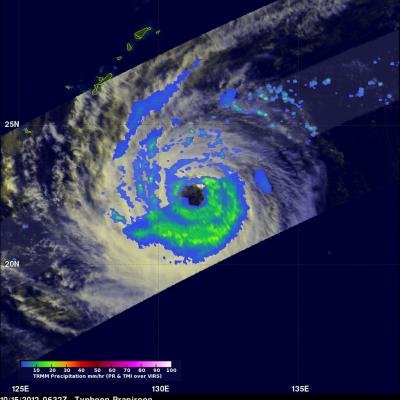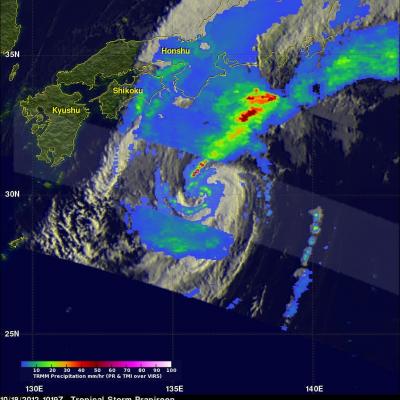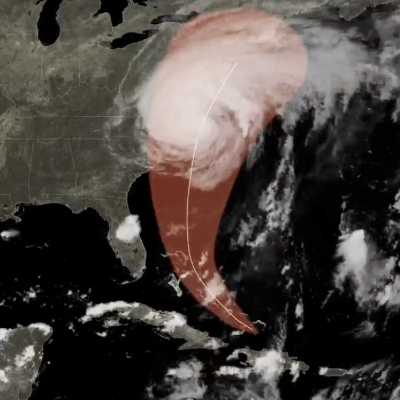Typhoon Usagi Still Powerful
The TRMM satellite again flew directly above category two typhoon USAGI, with maximum wind speeds of about 120kts (~130mph), on September 21, 2013 at 0209 UTC as USAGI was passing between Taiwan and the Philippines. Rainfall data from TRMM's Microwave Imager (TMI) and Precipitation Radar (PR) instruments are shown in this image. TRMM PR found rain falling at a rate of over 134 mm/hr (~5.2 inches) in USAGI's eye wall where radar reflectivity values of over 51dBZ were returned to the satellite. A weaker Typhoon USAGI is predicted to hit Hong Kong tomorrow with wind speeds of 80kts (~92 mph).


